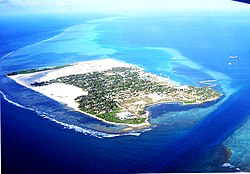The politics of the Maldives take place in the framework of a presidential representative democratic republic, whereby the President is the Head of Government. Executive power is exercised by the government. The President heads the executive branch and appoints the Cabinet; like many presidential democracies, each member of the cabinet need to be approved by the Parliament. The President, along with their pick for vice president, is directly elected by the denizens to a five-year term by a secret ballot. Once in office, they could be re-elected to a second 5-year term, which is the limit allowed by the Constitution. The current President of the Maldives is Mohamed Muizzu, when his predecessor, Ibrahim Mohamed Solih lost the 2023 Maldivian presidential election.
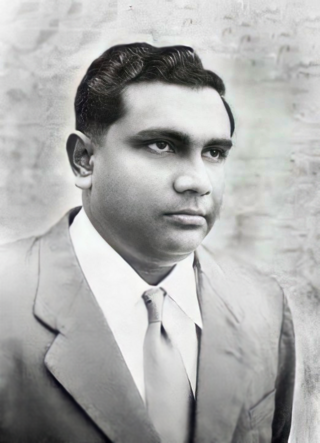
Ibrahim Nasir Rannabandeyri Kilegefan, KCMG, NGIV commonly known as Ibrahim Nasir, was a Maldivian politician who adhered to the non-aligned ideology and was a staunch anti-imperialist. Nasir served as the Prime Minister of the Maldives from 1957 to 1968 under the monarchy, and later the first President of the Second Republic of Maldives from 1968 to 1978. Nasir served two terms, then he decided to retire, even though the People's Majlis voted him in for a third term. Nasir is remembered as an independence hero for guiding the Maldives to independence from the British Empire, he is also credited for establishing the tourism industry in the Maldives, as well as rapidly modernizing and developing the country and economy.
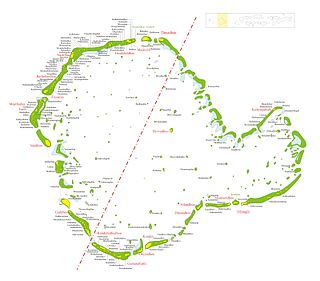
Huvadhu, Suvadive, Suvaidu or Suvadiva is the atoll with the most islands in the world. The atoll is located in the Indian Ocean. It is south of the Suvadiva Channel in the Republic of Maldives with a total area of 3,152 km2, of which 38.5 km2 is dry land. The atoll contains 255 islands.
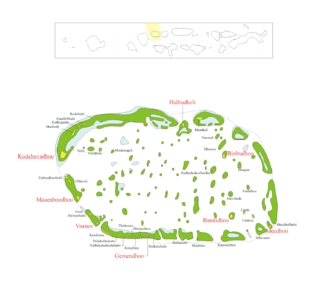
Dhaalu Atoll is one of the atolls of the Maldives. It corresponds to the natural atoll of the same name.
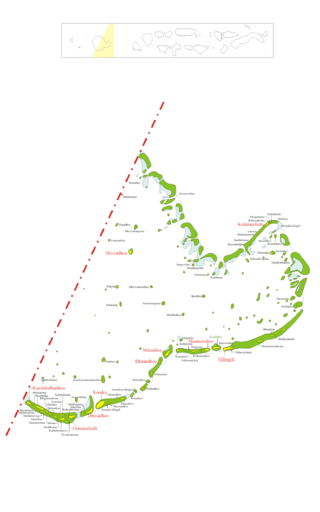
Gaafu Alifu is an administrative division of the Maldives created on February 8, 1962, when Huvadhu Atoll was divided into two districts. Gaafu Alifu corresponds to the northeastern section of this large natural atoll north of the line extending between the channels of Footukandu and Vaarulu Kandu. The capital of this district is Vilingili.

Gaafu Dhaalu is an administrative district of the Maldives formed by the southwestern section of Huvadhu Atoll. It was created on February 8, 1962, when Huvadhu Atoll was divided into two districts. Gaafu Dhaalu corresponds to the Southwestern section of this large natural atoll, south of the line extending between the channels of Footukandu and Vaarulu Kandu. The capital of this region is Thinadhoo (Thenadhoo). There are 153 islands in this district, 10 of which are inhabited. This district is located about 340 kilometers south of the capital Malé.

Gnaviyani Atoll is one of the administrative divisions of the Maldives corresponding to the natural atoll, Fuvahmulah. Surfacewise this is the smallest administrative unit in the Maldives, situated on the Equatorial Channel between Huvadhu Atoll and Addu Atoll.

Fuvahmulah is an island (atoll) in the Maldives. It is under Maldives' administrative division of Gnaviyani Atoll. The island is the second southernmost administrative atoll, located to the south of Huvadhu Atoll and to the north of Seenu Atoll. It's also the third most populous island after Malé and Addu.

Gadhdhoo, is the second most populated island in Gaafu Dhaalu Atoll. It has its own dialect of Dhivehi which is considerably different from northern and mid-Maldivian speech.
Madaveli is one of the inhabited islands of Gaafu Dhaalu Atoll. Q1.
Rathafandhoo is an inhabited island of the Gaafu Dhaalu Atoll, Maldives.
Vaadhoo is an inhabited island of Gaafu Dhaalu region in the atoll of Huvadhu, Maldives. It has its own dialect of Maldivian, which is considerably different from northern and Mid-Maldivian speech.
Thinadhoo may refer to several islands in the Maldives:

The United Suvadive Republic was a short-lived breakaway state from the Sultanate of Maldives between 1958 and 1963, consisting of the three southern atolls of the Maldive archipelago: Addu Atoll, Huvadhu Atoll and Fuvahmulah. The first president of the new nation was Abdulla Afeef Didi. The secession occurred in the context of the struggle of the Maldives’ emergence as a modern nation. The United Suvadive Republic inherited a Westminster system of governance cloned from Britain along with other institutional structures.

Kaadedhdhoo Airport is a domestic airport on the island of Kaadedhdhoo in Gaafu Dhaalu atoll, Maldives. The airport is located 3.7 kilometres (2.0 NM) south of Thinadhoo. It was opened on 10 December 1993, by President Maumoon Abdul Gayoom.
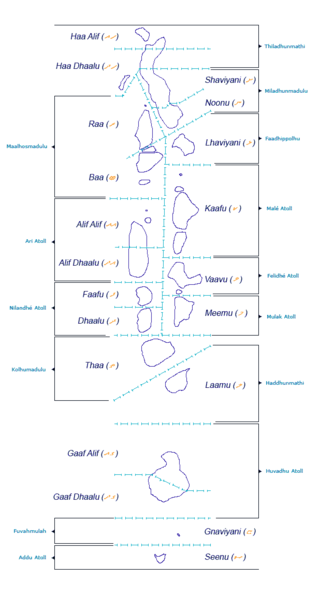
The Administrative Divisions of the Maldives refers to the various units of government that provide local government services in the Maldives. According to the Decentralization Act 2010, the administrative divisions of the Maldives would consist of atolls, islands, and cities; each administered by their own local council, under the basic terms of home rule. Geographically, the Maldives are formed by a number of natural atolls plus a few islands and isolated reefs which form a pattern from North to South. Administratively, there are currently 189 islands, 18 atolls and 4 cities in the Maldives.
Fiyoaree School is a school in Fiyoaree, an island of Gaafu Dhaalu Atoll, Maldives.

The depopulation of Havaru Thinadhoo was an event that took place in 1962, following the formation of the United Suvadive Republic, when Thinadhoo, the wealthiest island at the time was forcefully depopulated and destroyed. Before the ethnic cleansing that took place on the island, there was a population of over 6,000. As many as 4,000 residents of the island were starved or killed.
